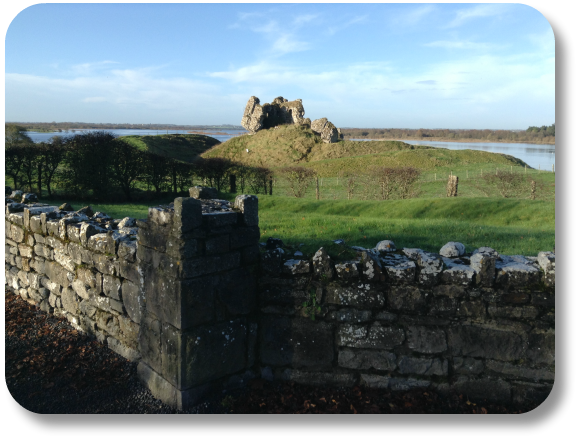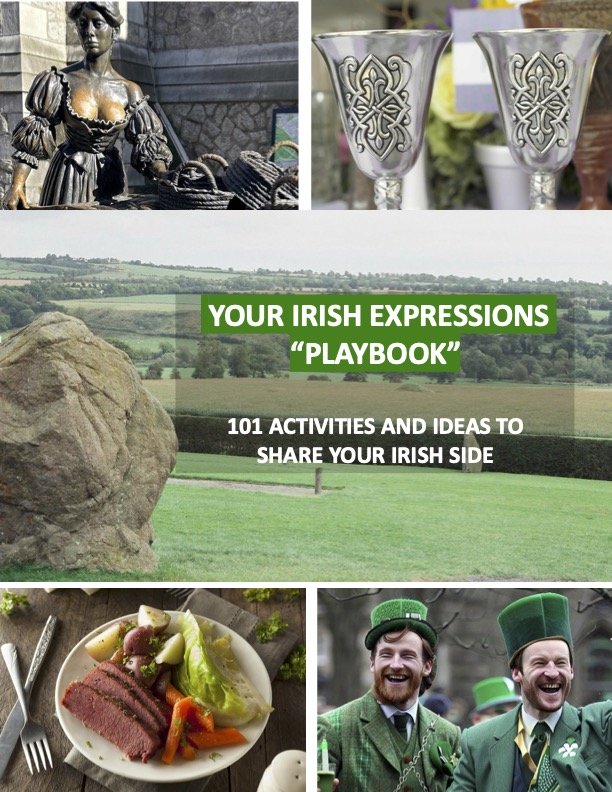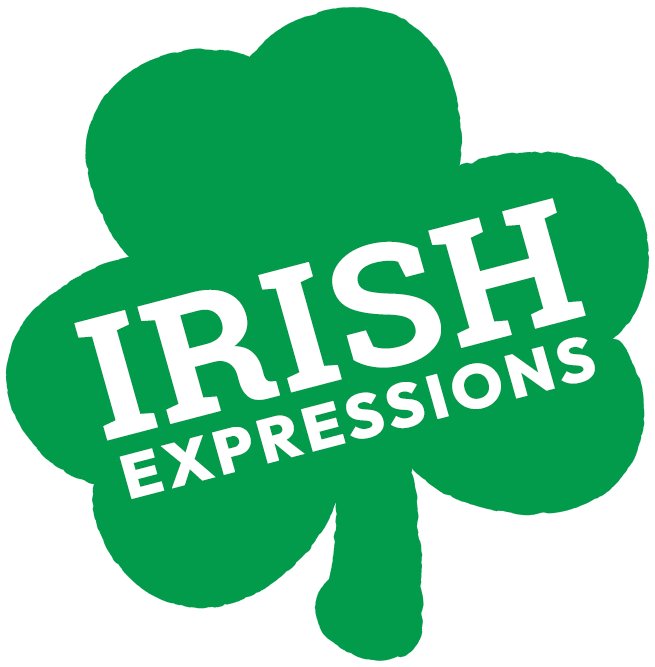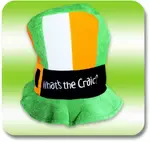- Home
- Sights
- Ireland Castles
- Clonmacnoise Castle Ruins
Clonmacnoise Castle Ruins: So Much More Than a Rock on a Hill!
Right in the heart of Central Ireland are the Clonmacnoise
Castle ruins, found in Offaly County and Province of Leinster. The drive to
Clonmacnoise Castle from the Dublin Airport is typically under 90 minutes,
depending on traffic, and it is a straight shot heading west.
Ready to bring a little more Ireland into your life?
Discover Your Irish Side
and keep a beautiful, free memento of the journey.
Start your adventure here →

Follow the road signs directing you to the M6, and stay on the highway until you spot the exit signs for the R446 and Clonmacnoise. Frequent signs point the way to the castle and show you where to park to tour the ruins.
Things to Know About Clonmacnoise Castle Ruins
Here are some fun facts about this amazing Irish landmark. Hopefully they will entice you to pay a visit in person!
But if that is not possible, you can always use them to impress your friends with your knowledge of one of the most-visited attractions in Ireland.
- When the Anglo-Normans colonized Ireland in the 12th century, they build a wooden castle in the area now known as Clonmacnoise, in County Offaly.
- Although the wooden castle burned down, it was replaced by a stone version in the following century.
- Today, Clonmacnoise Castle is merely a collection of ruins, but they are unique because they are so precariously balanced at the top of a hill that they appear to be falling.
- It is breathtaking to see this ruined castle among green fields filled with local dairy cows!
- Clonmacnoise is a well-known landmark in Ireland, but most people aren't thinking of the castle. Instead, they are thinking of Clonmacnoise Monastic Site, an early landmark that dates back to the middle of the sixth century.
- The castle is just outside those monastic walls. It is well worth a visit, and it has a rich and fascinating history of its own.
- On top of an earthen mound called a motte, Anglo-Normans constructed the first Clonmacnoise Castle, which was made entirely of wood. After a fire burned down the timber castle, a stone one went up in its place.
- The stone Castle was erected by Henry of London, the Justiciar of Ireland. The job of the castle was to harness some control over the midlands.
- The other objective of the castle was to serve as a way to oversee the River Shannon. The castle overlooks the water's edge and is less than 100 feet from the river.
- Originally, the castle has three stories. Today, that fact is hard to tell because the castle is so twisted, bent and in ruin.
- The castle has been largely destroyed as far back as the 14th century. Many battles during the Gaelic Resistance took place in the area, damaging English strongholds like the castle at Clonmacnoise.
- The decline of the nearly Clonmacnoise Monastery also contributed to the ruin of the castle. Local residents began to patronize parochial churches, and monasteries like this one became less popular.
- What makes the castle such a popular spot to visit is its unusual aesthetic appeal. The castle is precariously perched on the top of the motte, and it looks like a strong gust of wind could knock it over at any second.
- Be sure to combine your trip of the castle with a visit to the nearby monastic site. It is home to several religious buildings as well as a number of beautiful and sculptural Gaelic crosses.
Want More Irish Castles?
It is probably obvious - at Irish Expressions, we love Irish castles! The Emerald Isle is dotted with hundreds of these incredible structures. Sharing pictures and stories about them gives us a deeper sense of connection with Ireland, wherever in the world we happen to be!
Knowledge of Irish castles and their fascinating stories will also help you enjoy the many downloadable, share-able Irish games, puzzles, recipes, songbooks, quizzes, and many other resources that we have collected for you over the years.
Want them right now? Keep reading to learn about "Your Irish Expressions Playbook."
More Fun With Irish Expressions
Congratulations on learning more about the Emerald Isle and discovering what we like to call your "Irish Side." You may be thinking "I'd love to actually VISIT Ireland but that's really not in the cards right now. What am I supposed to do with the stuff I just learned?"
Well never fear! Since 2007 we have collected all of the best printable, shareable resources we could find, to help you put your new knowledge of Ireland to good use. We've put them all together in a single download we call "Your Irish Expressions Playbook," which contains over 100 pages of games, puzzles, recipes, songbooks, quizzes, travel guides and much, much more.

Purchase them ALL for one small price, print as many copies as you like and share them with your friends - with no limitations! But order soon - we are already adding to the Playbook for future editions and this price will not last long.
Oh, want one more reason to order right away? If you buy YOUR copy of the Playbook now, you will be allowed to upgrade to any new future edition for FREE.
PRO TIP: Be sure to click the 'return to merchant' button following checkout, to ensure you are routed to the page where you can download your Playbook. Any issues? Just reach out to us at support@irish-expressions.com and we will make it right.

Please Share Your Feedback
Did we miss anything? Is there a topic you would like us to cover in the future? Tap HERE to let us know!



